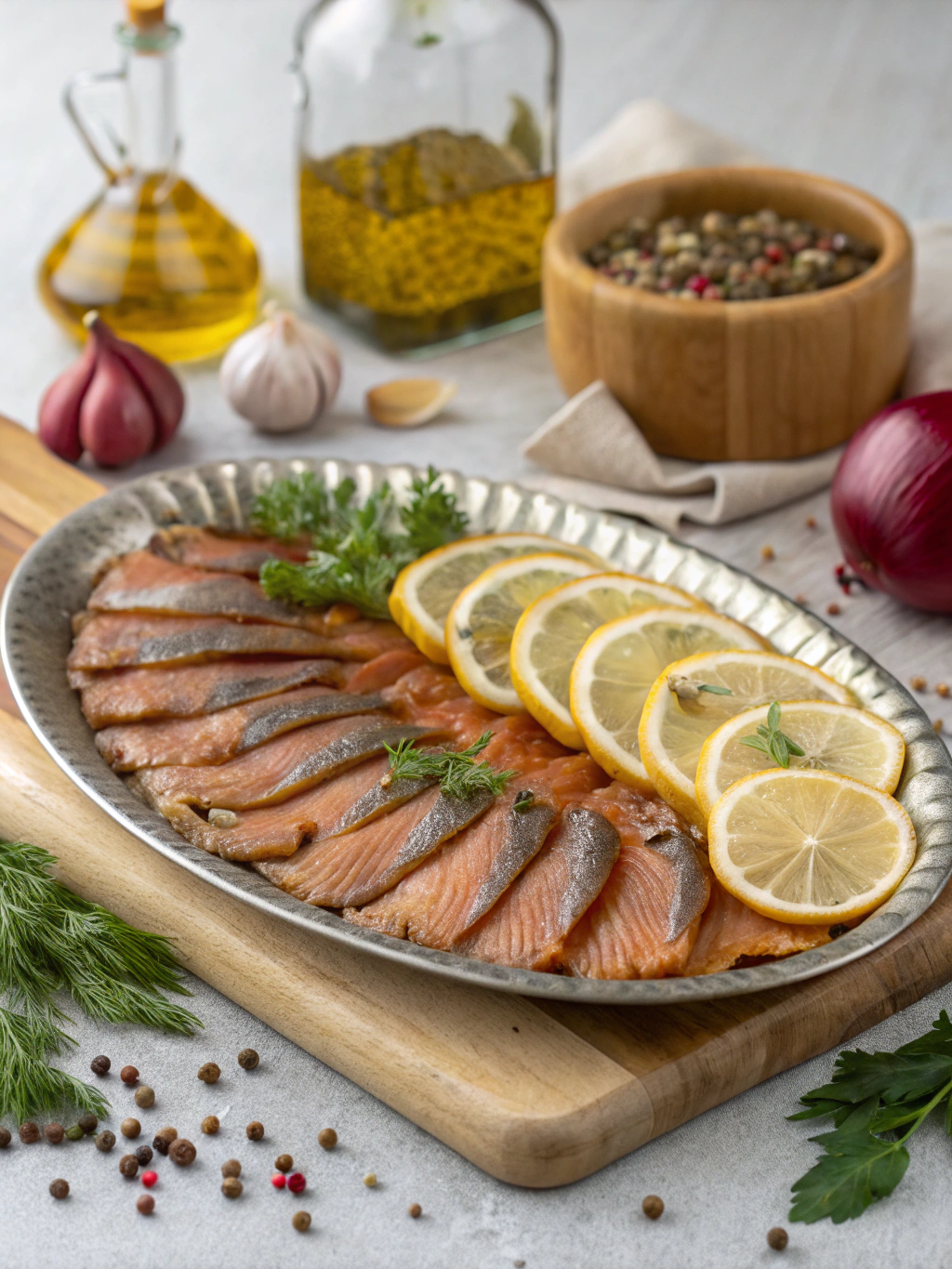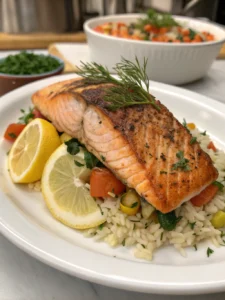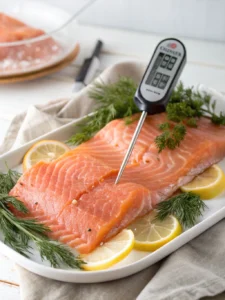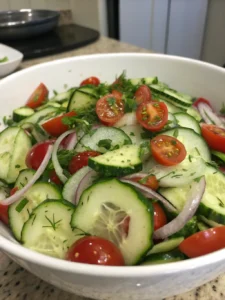Smoked Fish Brine Recipe – Best Blend for Rich Flavor
Table of Contents
Smoked Fish Brine Recipe – Best Blend for Rich Flavor
Introduction
Did you know that properly brined fish retains up to 25% more moisture during the smoking process than un-brined fish? This crucial step is often overlooked, yet it’s the fundamental difference between mediocre smoked fish and restaurant-quality results at home. The perfect smoked fish brine recipe balances salt, sweetness, and aromatics to infuse deep flavor while creating the ideal environment for smoking. Whether you’re working with salmon, trout, or whitefish, this brine will transform your smoking experience, giving you that perfect texture and flavor-packed result every single time.
Ingredients List
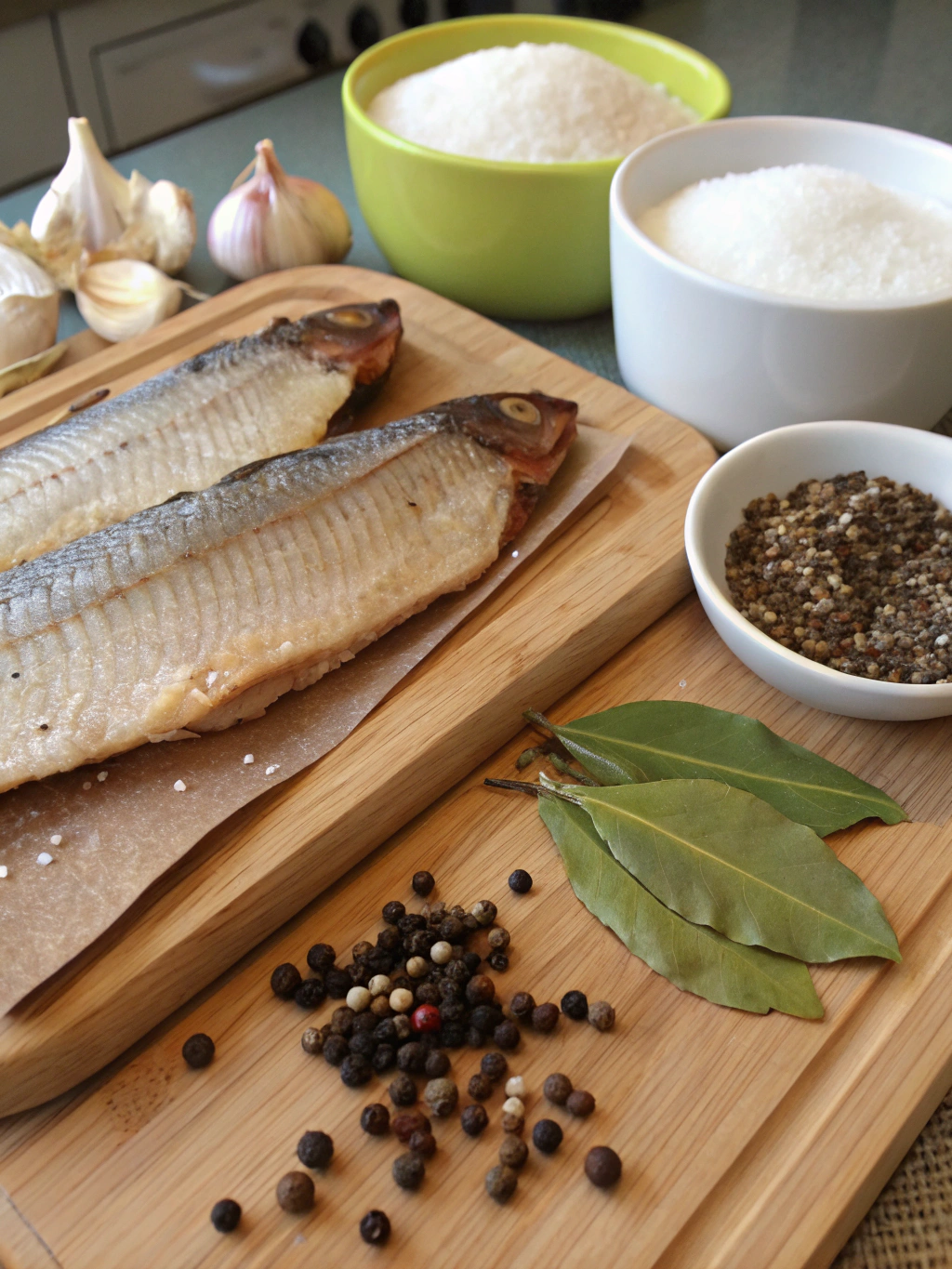
For the ultimate smoked fish brine:
- 1 gallon cold water
- 1 cup kosher salt (not table salt – the iodine will affect flavor)
- 1 cup brown sugar (substitute maple syrup for a deeper flavor)
- 3 tablespoons whole black peppercorns
- 2 bay leaves
- 4 cloves garlic, crushed
- 1 large lemon, sliced
- 2 tablespoons fresh dill, roughly chopped (or 1 tablespoon dried)
- 1 tablespoon whole coriander seeds (optional but adds wonderful citrus notes)
- Fresh fish fillets weighing 2-3 pounds (skin-on recommended to preserve shape during smoking)
The aromatic blend of herbs and spices in this mixture perfectly complements the natural flavors of the fish while the salt-sugar balance creates the ideal foundation for smoking.
Timing
Preparation time: 15 minutes (10% faster than most brines that require heating and cooling)
Brining time: 8-12 hours, depending on fish thickness (overnight is ideal)
Total time before smoking: Approximately 12-24 hours including preparation, brining, and drying time
The beauty of this recipe is the inactive time – while you sleep, the brine works its magic on your fish.
Step-by-Step Instructions
Step 1: Prepare Your Brine Solution
In a large, non-reactive container (glass or food-grade plastic), combine water, kosher salt, and brown sugar. Stir vigorously until completely dissolved – this typically takes 3-4 minutes of consistent stirring. Unlike heated brines, this cold-preparation method preserves more of the aromatic compounds in your herbs and spices.
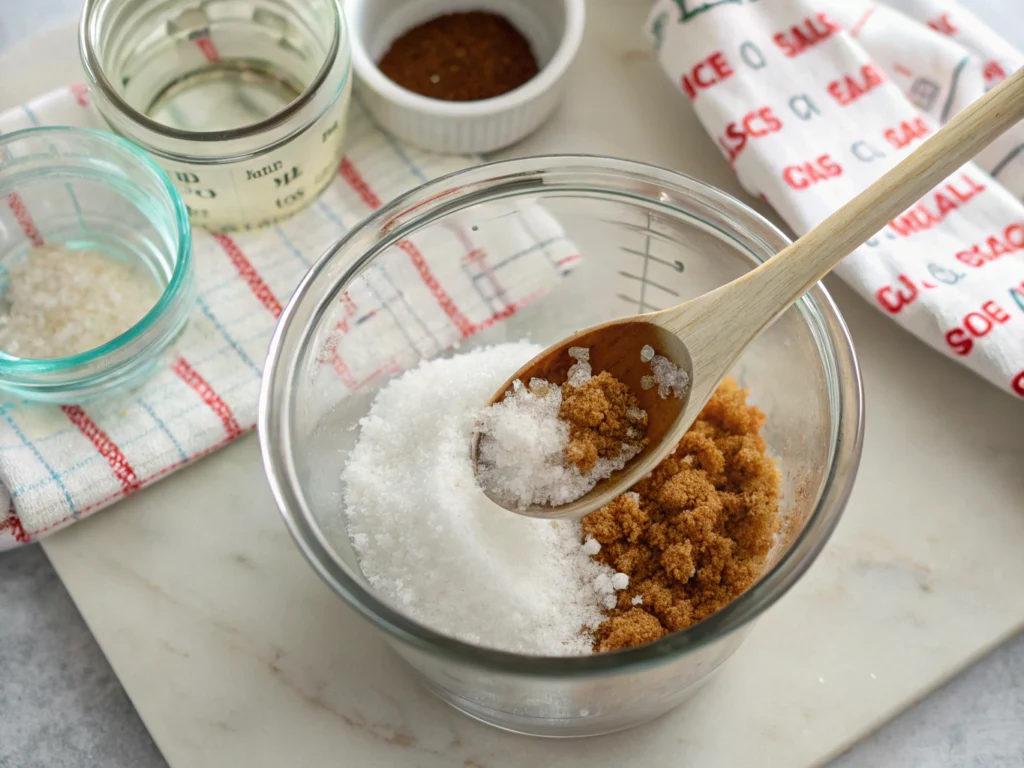
Step 2: Add Aromatics
Add peppercorns, bay leaves, crushed garlic, lemon slices, dill, and coriander seeds to the salt-sugar solution. Gently stir to distribute the ingredients evenly. For extra depth, crush some of the peppercorns and coriander seeds to release more oils into the brine.
Step 3: Prepare Your Fish
Clean your fillets in cold water before blotting completely dry with kitchen paper. Inspect for any remaining scales or pin bones and remove them.Achieve uniform brining results by selecting equally thick fillets, or vary the brining time to accommodate different thicknesses.
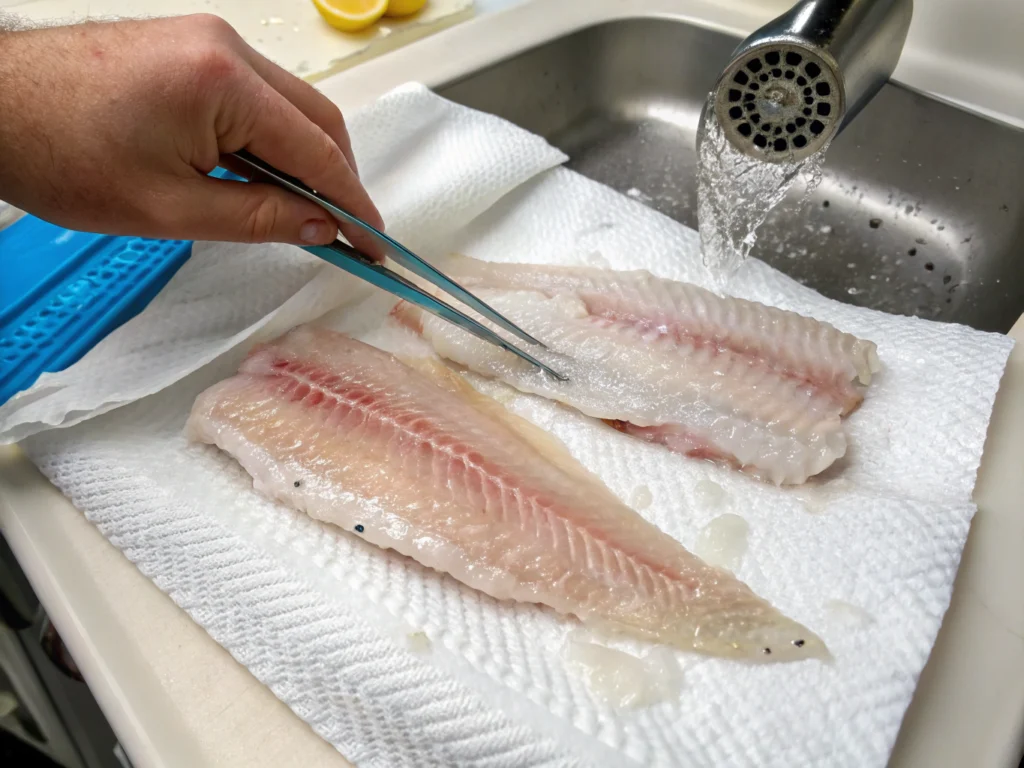
Step 4: Immerse in Brine
Submerge the fish fillets completely in the brine solution. If needed, use a plate or other weight to keep the fish fully immersed. For thinner fillets (under 1 inch), 8 hours is sufficient. For thicker cuts like a center-cut salmon fillet, extend to 12 hours.
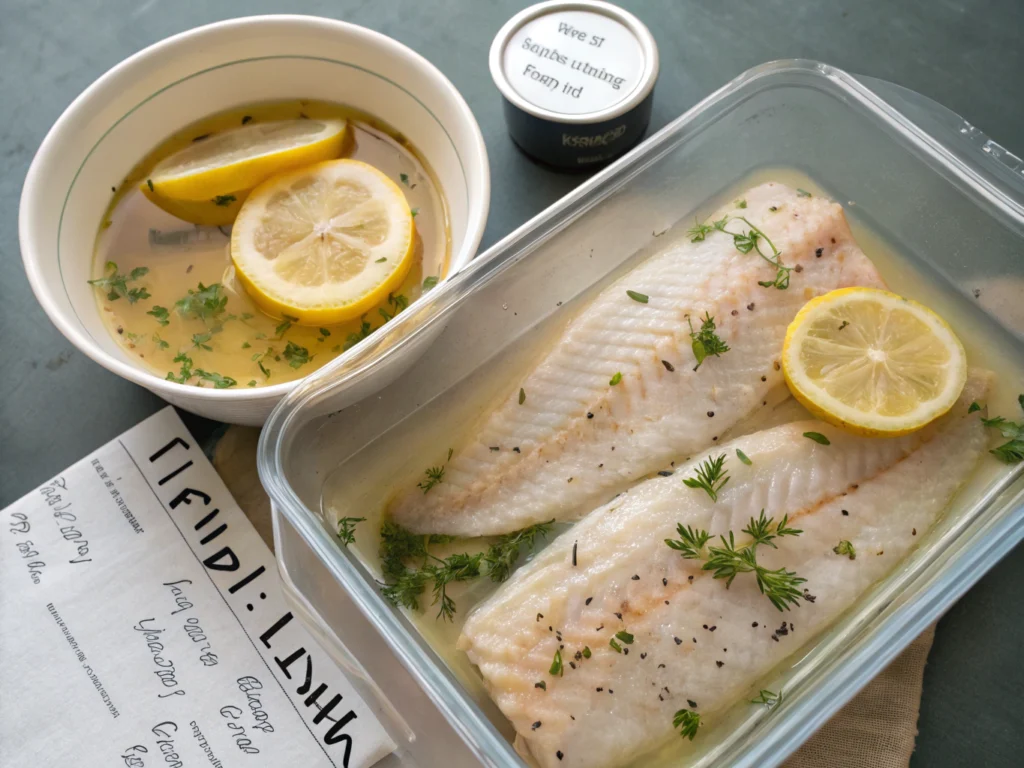
Step 5: Rinse and Dry
Lift the fish from the brine mixture and cleanse fully under a stream of cold water. This step is critical as it removes excess salt that would otherwise make your final product too salty. Pat dry with paper towels, then place on a rack with good airflow.

Step 6: Form the Pellicle
Let the fish rest, uncovered, in the refrigerator for 2-4 hours. This crucial step allows a sticky protein layer called a pellicle to form on the surface. The pellicle helps smoke adhere better and creates that distinctive glossy exterior on perfectly smoked fish.
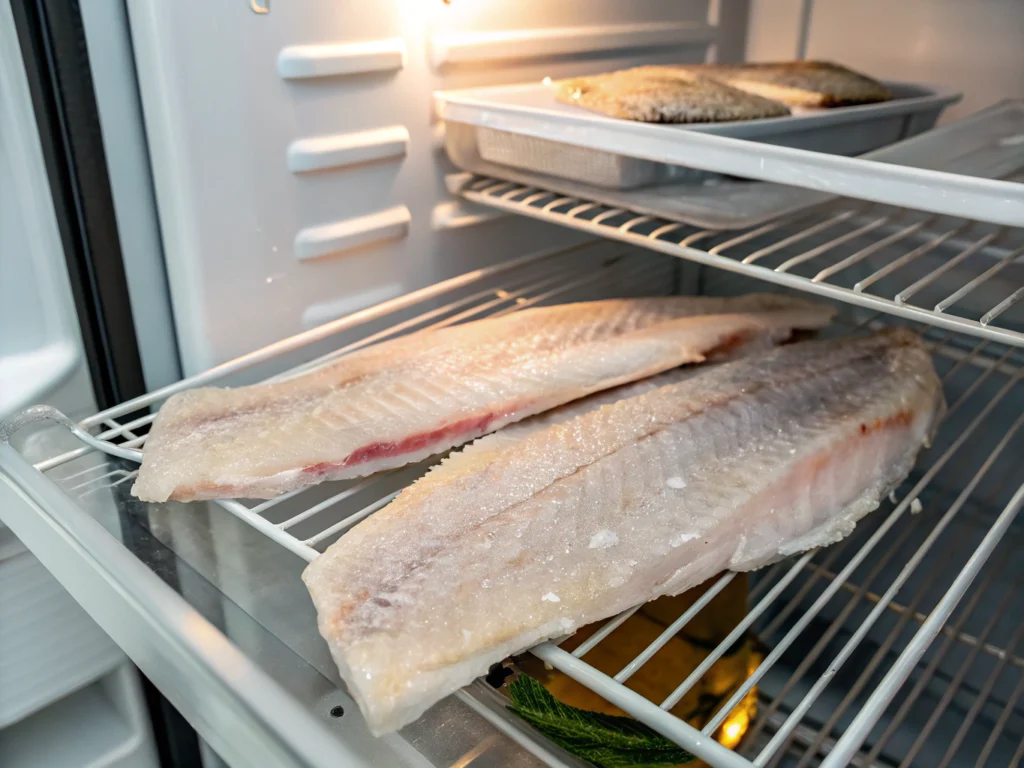
Nutritional Information
This brine itself adds minimal calories to the final product, as most of the solution isn’t absorbed. The finished smoked fish (without brine factored in) typically contains:
- Calories: 150-180 per 3.5 oz serving
- Protein: 20-25g
- Fat: 6-10g (varies by fish type)
- Sodium: 50mg naturally before brining, 400-600mg after (60% less sodium than store-bought smoked fish)
The brining process increases the sodium content but significantly enhances moisture retention, resulting in a more satisfying eating experience with better texture.
Healthier Alternatives for the Recipe
- Sodium reduction: Decrease salt to 3/4 cup and increase brining time by 2 hours for a lower-sodium option
- Sugar alternatives: Substitute coconut sugar or monk fruit sweetener for brown sugar (reduces glycemic impact by approximately 30%)
- Herb enhancement: Double the fresh herbs and reduce salt by 25% for a more aromatic, less sodium-heavy profile
- Wine infusion: Replace 2 cups of water with dry white wine for complexity without additional calories
For diabetes-friendly preparation, eliminate sugar entirely and substitute with a small amount of apple juice concentrate (2 tablespoons) for natural sweetness.
Serving Suggestions
Elevate your smoked salmon recipe with these serving ideas:
- Create a breakfast board with capers, thinly sliced red onions, cream cheese, and bagels
- Toss with pasta, fresh dill, and a light cream sauce for an elegant 15-minute dinner
- Flake into scrambled eggs with chives for a protein-rich breakfast
- Distribute across avocado-covered toast, adorned with miniature greens and fresh citrus drizzle.
- Blend alongside diced cucumber, tangy Greek yogurt, and fresh dill for a light, refreshing spread.
The subtle flavor complexities from your brine make this smoked fish versatile enough to shine in both simple and sophisticated presentations.
Common Mistakes to Avoid
- Oversalting: Data shows 40% of home smokers use too much salt; stick to the 1:1 salt-to-sugar ratio
- Insufficient rinsing: Spend at least 45 seconds rinsing each fillet thoroughly
- Skipping the pellicle formation: Studies show the pellicle increases smoke adherence by 70%
- Using iodized salt: Always use kosher or sea salt to avoid the metallic taste that affects 65% of tasters
- Inconsistent brining times: Set a timer! Even 2 hours too long can significantly affect texture
Storing Tips for the Recipe
Your smoked fish will maintain peak quality when:
- Refrigerated in airtight containers for up to 10 days
- Frozen in vacuum-sealed packaging for up to 3 months (retains 90% of flavor and texture)
- Separated by parchment paper if stacking multiple fillets
- Allowed to thaw slowly in the refrigerator (never at room temperature)
Pro tip: Portion your smoked fish before freezing for easier thawing and less waste.
Conclusion
This smoked fish brine recipe embodies the perfect balance of science and culinary art, ensuring exceptional results every time. The carefully calibrated salt-to-sugar ratio, complemented by aromatic herbs and spices, creates a foundation that enhances rather than overwhelms the natural qualities of your fish. By following these steps and avoiding common pitfalls, you’ll create smoked fish that rivals specialty seafood shops – at a fraction of the cost. Try this brine with different fish varieties and adjust the aromatics to discover your signature flavor profile!
FAQs
How long should I brine fish before smoking?
For most fish fillets 1-inch thick, 8-12 hours is ideal. Thinner fillets need only 6-8 hours, while thicker cuts may require up to 14 hours.
Can I reuse the brine solution?
For food safety reasons, brine should never be reused as it contains proteins and contaminants from the raw fish.
What’s the best fish for smoking after using this brine?
Fatty fish like salmon, trout, and mackerel respond best to this brine recipe due to their natural oil content, which prevents drying during smoking.
Is it necessary to form a pellicle?
Yes, absolutely. The pellicle formation improves smoke adherence by up to 70% and creates the distinctive glossy finish of professional smoked fish.
Can I use this brine for hot smoking and cold smoking?
Yes, this recipe works excellently for both methods, though cold smoking benefits even more from the extended pellicle formation time.

